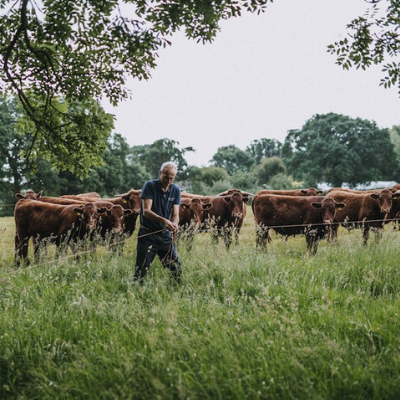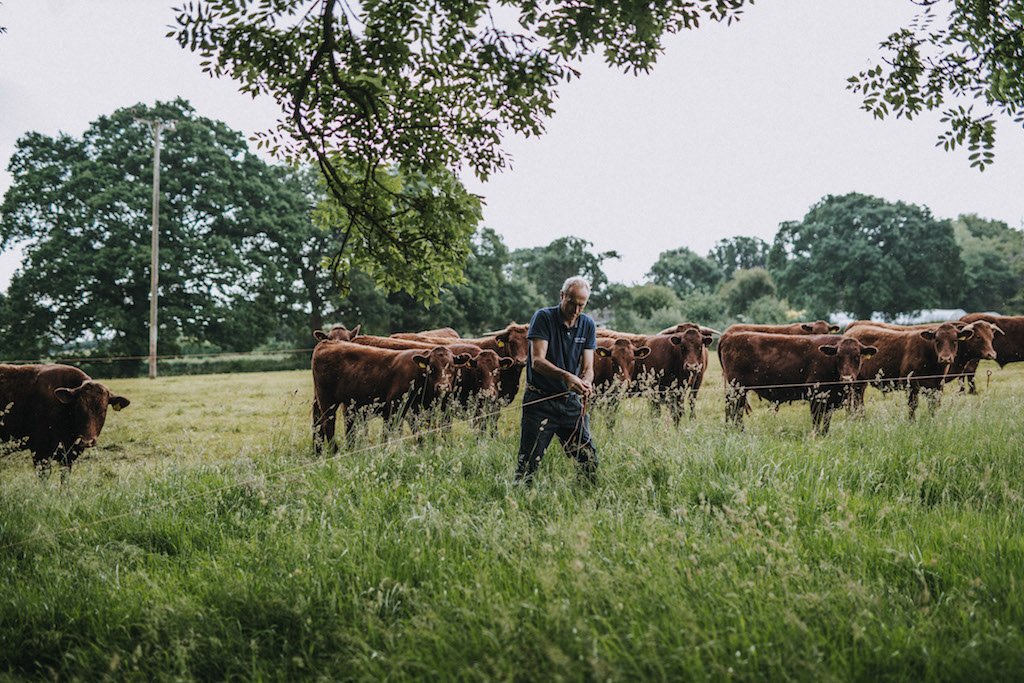Pipers Farm: What's the beef with eating meat?
Abby Allen from Pipers Farm share with us there thoughts on eating beef and what we should understand with regards to sustainable farming in their guest blog, 'What's the beef with eating meat?'

Abby Allen from Pipers Farm share with us there thoughts on eating beef and what we should understand with regards to sustainable farming in their guest blog, 'What's the beef with eating meat?'
There is a new buzz word in the air, a word that as soon as it leaves your mouth can instantly change the vibe in a room. That word is ‘vegan’. You see the minute you read this word, I bet you had a reaction. It’s a word that in its nature divides and causes an opinion.
Firstly I feel we ought to make it totally clear, we believe every person on this planet is free to make their own choice, free from judgment when it comes to the food they eat. In return what we're going to talk about is our view and our choice based on the way we think, feel and understand food, with no judgment of others who choose a different path…
Eat Less Meat
There is a growing concern in this country about eating meat. With regular headlines highlighting awful animal cruelty in factory farms, meat full of food poisoning bacteria that the only way it can be made safe is through cremation or chemicals, we’re not surprised that switched-on punters have had enough and are voting with their feet - or rather their bellies.
We’re going to break down the argument for you and answer ‘what’s the beef with eating meat?’
Veganism has begun shedding it’s 1970’s lentils and free love image, with more and more people choosing to remove meat from their diets. Now believe it or not, to us, this is great news.
Global meat consumption is on an unhealthy trajectory, with the main options still heavily centred around factory farmed meat. It is a fact that our planet cannot sustain the demand for industrial meat, our health is significantly compromised and the welfare conditions these animals endure is what nightmares are made of. For the last thirty years we have been spreading the message of ‘eat less meat’, however, we do not believe veganism is the answer, and here’s why…
Industrial Monocrops
Many of the foods created for the vegan, vegetarian, flexitarian market are hyper-processed foods full of highly processed ingredients like isolated proteins and industrial vegetable oils.
Transparency of sourcing or methods of plant production really aren’t part of the conversation, rather it’s simply a case of slapping on a label ‘suitable for vegans’ and it’s all good. You might as well stick a halo over the top of these products as their marketing is so convincing that they can do no wrong. In addition to misleading ingredients, a lot of these products are misleading in how they are produced. There seems to be little awareness of how the plant ingredients are modified. The reality is that many plant-based products are really lab concoctions created by industry and no longer represent food in its natural form.
Our biggest concern with so many of these food products is there is not the slightest concern for soil health or the variety of microbes and wildlife that need to coexist. In fact, most of the ingredients in these foods come from industrially farmed mono-cultures causing incomprehensible damage to our planet. Not quite the cute, cuddly, 'save the world' image projected.
Many may argue these lab concoctions are better for the environment and mean we don't have to kill animals....right? Not true, this all depends on how and where the ingredients are grown.
Just like factory meat farms mono-crops include the use of huge fossil fuel guzzling equipment on land that has been cleared of diversity, leaving just the single crop that’s growing. Historically all our farmland was a mix of forage, vegetation, grasses and woodland which would have been home to huge varieties of native plants, insects, and animals like mice, nesting birds, foxes, badgers, moles and deer. In a mono-crop system this entire ecosystem has been destroyed and in its place a single crop laid.
Often these plants are not native and are incredibly needy, the plants require protection from all insects and other animals that want to eat them, so insecticides and fungicides are used to keep insects and animals out of the soils and the fields. Any insects and animals that survive are often run over by the harvesting equipment when it comes to cut the crop.
Soil Biodiversity
These huge expanses of land are now 'dead zones' that only support the mono-crops being harvested. A lot of the soil biology has been destroyed due to excess tillage or chemicals poured on the land that, now required to make it function. Chemical inputs and excess tillage undermine the soil biology, the microbial activity, resulting in soil that is dead or dying. So the question is with these crops, do you wish to see the soil and all of its inhabitants die? That’s the tough thing about farming whether carrot or cow, the ultimate result is one life traded for another.
Though dead soil may not pull at your heartstrings in comparison to the life of a cow or a lamb, those soil microbes are the foundation for large parts of the food chain. Soil bacteria are consumed by things like worms, which in turn are consumed by small insects that are consumed by larger insects then birds and small mammals and so on. Everything is interconnected with one another.
Regenerative Farming
The newest buzzword so newly buzzy you may not have even heard it on the grapevine yet is “regenerative.” Regenerative like most words that create a cult-like following (organic, grass-fed, ethical, green…) is a little bit more than a marketing term. Regenerative means making a conscientious effort to source ingredients grown or raised on farms or in ways that regenerate land and soil health.
While we perpetually argue over dietary choices and judge each other for what we choose to eat, we seem to forget that as our population grows, our soil erodes and turns to unusable dirt, barren from years and years of abuse. Soil is being lost ten to forty times faster than it is being replaced.
Mob-grazing
Now let’s discuss zero input grass-grazing or the new trendy word ‘regenerative-grazing’. Here we’re talking about permanent pasture, pasture that is not tilled or disturbed ever. A variety of native grasses that have a lifetime to grow a deep root and topsoil that remains undisturbed by machine or man.
Cattle are divided onto a small portion of the land and are moved on strip by strip until all of the grass has been munched to its root. The cattle are only on a small part of the land at any one time, with adaptive management, for example, avoiding nesting birds that may be utilising the grassland at certain times of the year, the cattle are sharing the land with the entire ecosystem. With good management, farmers are farming other life, like insects and birds just as much as they are farming their cattle.
The cattle are regularly moved which means dung is better spread across the farm. Dung is hugely important not just for the hundreds of species who move in the minute it hits the pasture, but for the nurturing of the soil and grasses, it removes any requirement for pesticides or chemical fertilizers. Soil health is maintained, restored and enhanced. Healthy soil full of microbial life means more soil carbon and more water retention and ultimately more fertility. Healthy soil is the key to everything.
So, should we eat less meat?
What’s good or bad for the environment isn’t as simple as the latest mantra 'plants are “good” and meat is “bad”'. Many ways of farming; wheat, corn, rice, soya and vegetables can be incredibly detrimental especially to wildlife and soil health. Well-managed livestock can be hugely environmentally beneficial and enhance biodiversity across a whole stretch of land. What’s harvested is the livestock, so yes, livestock will be killed to become our food, but none of the wildlife, insects or microbes are displaced or need to die. So like most things in life, we have to make trade-offs, it's all about finding a balance. The choice is yours.

